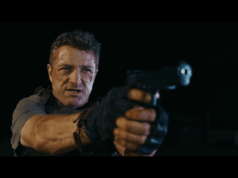“Few films dare go this far in their depiction of nihilistic violence”
Rob Zombie’s latest film 31, which he states was made out of frustration surrounding Broad Street Bullies, his long-in-the-works project that has been stuck in development for many years, is proof-positive that the heavy metal musician and horror movie fan has no reason nor ambition to compromise his work. He makes films for those who love and hunger for the return of horror films before the genre was even given a cogent, neatly summarized name, and prior to it becoming democratized outside of scuzzy, low-lit theaters in poor neighborhoods.
31 is a culmination of all his films. It packs in the reprehensible characters of House of 100 Corpses, the black humor and dirtiness of The Devil’s Rejects, and the quaint, realized visual-scheme of The Lords of Salem and amplifies the gore and brutalization of his cast accordingly. I think I was too quick to label Don’t Breathe the nastiest horror film of the year; for some, 31 may be stomach-turning, vomit-inducing madness as it relentlessly showcases some of the most unrelenting brutality in quite sometime.
- 31
- Directed by
Rob Zombie - Cast
Malcolm McDowell, Richard Brake, Jeff Daniel Phillips - Release Date
16 September 2016 - Steve’s Score: 7.5
*****
The film revolves around a group of trashy carnival workers, making their way through desert-country in a ramshackle RV on Halloween night 1976. After a brief stop at a gas station, they – composed of Charly (Sheri Moon Zombie), Panda (Lawrence Hilton-Jacobs), Venus (Meg Foster), Levon (Kevin Jackson), and Roscoe (Jeff Daniel Phillips) – are stopped and attacked in the middle of nowhere. Once they awaken, they find themselves inside an abandoned warehouse that has been redesigned as a horrific, deathly funhouse of horrors, and are informed by a hierarchy of what look to be exaggerated, politician-esque figures – lead by the great Malcolm McDowell – that they have twelve hours to try and survive the horrors inside. Robbed of their names and solely referred to by numbers, with their odds of survival wagered by the aforementioned rulers, the group must fend off chainsaw-welding, rapist clowns, a dwarf dressed as Hitler (Poncho Moler) brandishing a knife, and a slew of other demented subhumans in hopes of surviving the scariest night of the year.
Zombie exhausts every possible funhouse setup he can with this film, beautifully accentuating variety by way of circus-style sets with bloody death-traps, rooms lit only by strobe-lights, a disgusting bathroom that makes truck-stop urine wells more enticing, and loads of other surprises I dare not spoil. The film feels much like entering a real-life haunted house, except with the risks more-than notably raised. It echoes the sensibilities and elements of surprise Zombie uses in his other films, and it goes to show how his craft, style, and even efficiency have blossomed over the course of his career.
The issue that arises from all this, however, is Zombie’s videography, which is, at times, stunningly bad and even abysmal. When the most climactic moments of every room begin, Zombie decides it’s warranted to shake the camera, causing complete disorientation on behalf of the audience. By doing this, he effectively blurs what should be something clear-as-day, losing all sense of placement and giving the impression this is a cop-out move in order to avoid an NC-17 rating at times.
Zombie’s directing leaves a lot to be desired in these moments, which is strange since his prior filmography is known for its strong direction. His films, even at their most ugly, exude a rare elegance in their trashy demeanor that I can only compare to the work of director John Waters, especially given how Zombie hires some of the most aesthetically different and interesting-looking people to play his parts. The shaky videography really offsets a lot of the tension during the closing moments of certain sequences, but prior to those, it’s nothing but a horrifying and merciless journey through the bowels of violence and brutality.
I can’t go into 31 at this length without mentioning the compelling tour-de-force English-born actor Richard Blake gives. Playing a character known only as “Doom-Head,” a vicious, unstable caricature with chipping clown face-paint and dried blood that cakes the bottom half of his face upon several self-inflicted blows to the jaw, he is called in when the mess at the warehouse gets really ugly. The opening sequence of the film is an unsettling, medium-length shot of him addressing a character off-screen right before he finishes him, like a drawn-out, vulgar Mortal Kombat-style execution. The way Blake assimilates in the atmosphere is enough for you to buy his character, but the way he moves and speaks, each word and syllable rolling off his tongue with a singeing impact shows the great work of a passionate character-actor.
It’s sad to say, but the sole handicap of 31 that prohibits a full recommendation is the uncontrolled and semi-frequently sloppy directing. Zombie proves himself a true, unapologetic auteur with the visual look and feel he gives all his films, and throws it all into a melting pot to stew and create a film like this. To do that and almost downright soil it with lackluster camerawork is self-defeating and almost criminal. Beyond that, however, few films dare go this far in their depiction of nihilistic violence and true contempt for human life, so in that case, in many ways, this is the film that opens the levee of horror, reminding us the true impact these kinds of films can leave, after a long drought.1







